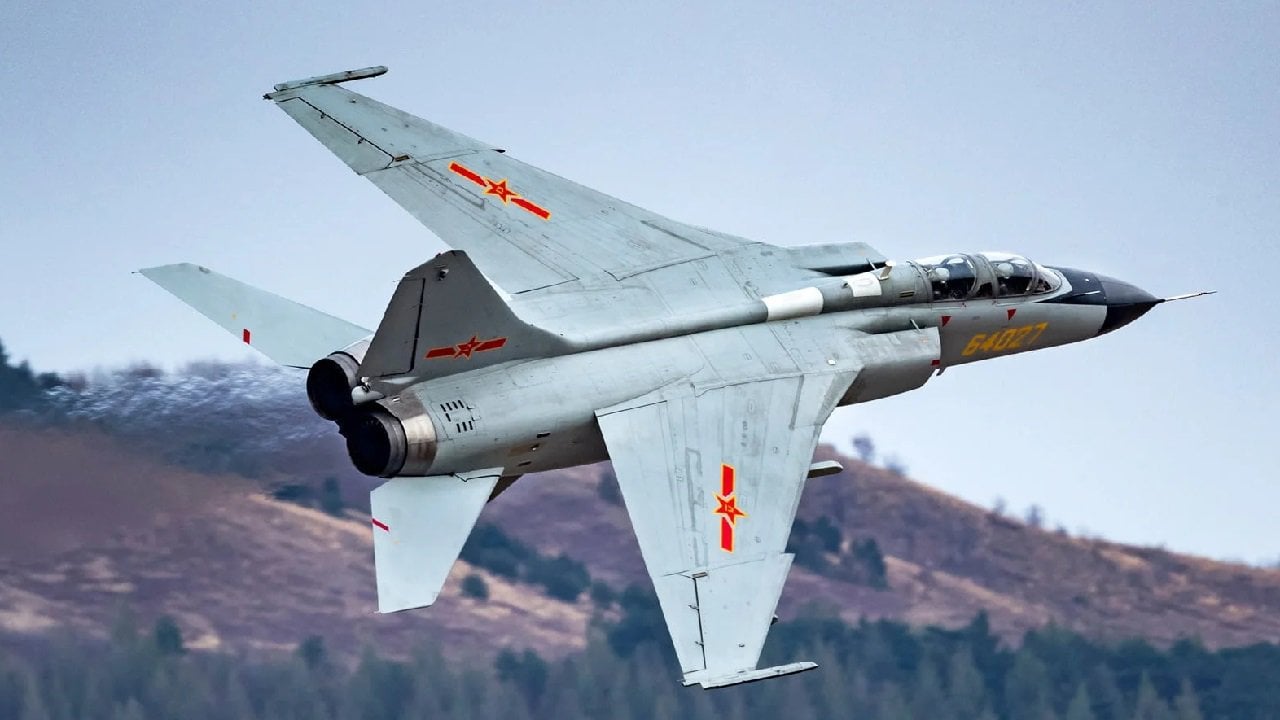The Xian JH-7 fighter-bomber is still one of China’s main strike aircraft that can fire stand-off missiles and drop bombs on enemy shipping. Configured now as a maritime attack airplane, the JH-7 is an old standard that keeps flying critical missions that patrol the waters around China. The JH-7 “Flying Leopard,” known also by its NATO moniker “Flounder,” has been around since the late 1980s and is non-stealthy.
Flying Leopard Specializes in Ship-killing
In the 1970s, China wanted a supersonic fighter-bomber that could keep up with the American F-111 Aardvark, one of the country’s best strike airplanes. Xian used computer-aided design for the first time, and the JH-7 evolved into an airplane that could menace enemy shipping. It has a pilot and weapons systems officer to better deliver accurate munitions.
Fast Enough to Remain in the Mix
The twin-engine JH-7 first flew in 1988 and entered service in 1992. Its 23mm cannon is the basic armament and it can handle over seven tons of bombs and missiles on nine hardpoints. China was able to import British Rolls Royce Spey 202 turbofan engines, with 12,250 pounds of thrust, although they are a bit underpowered for a heavier fighter-bomber. The top speed is around MACH 1 with a ceiling of 50,000 feet. Despite its main sea attack mode, it is still able to fire land-attack missiles. There are about 260 in service with China’s Air Force and Navy.
Lesson Learned Keep It Relevant
China has always excelled at watching other wars and learning lessons about what worked well and what didn’t. It observed the Falkland Islands war and noted how the British were able to utilize anti-ship missiles to great effect. That was the impetus behind making the JH-7 into a day and night, all-weather strike airplane that could eliminate enemy ships.
Impressive Array of Ordnance
Its anti-ship missiles are radar-guided with a 100-mile range. Air Force-Technology described the full armament array and it’s impressive. “The Flying Leopard is equipped with PL-5, PL-8, and PL-9 air to air missiles (AAM), Yingji-8K, Yingji-82K anti-ship missiles (ASM), and Yingji-91 anti-radiation missile (ARM). The aircraft is fitted with 57mm or 90mm unguided rocket pods, and unguided and laser-guided bombs.”
Modernization Project Results in a Better Airplane
By 2004, China had worked out all the kinks on the original JH-7 and added upgrades that year. The new JH-7A offered improved avionics with modern LCD displays in the cockpit. Components were lighter for better aerodynamics. Digital fly-by-wire capabilities were added. Enhancements to radar allowed it to fly at low-level flights when necessary. Two more hardpoints were added. The Flying Leopard can also utilize countermeasures such as flares and chaff.
JH-7s have endured a rocky history with 12 losses in mishaps over the years – the worst was a crash and burn at an airshow in Shanghai in 2011.
How Could It Be Used in Battle?
JH-7s often fly missions into Taiwan’s Air Defense Identification Zone (ADIZ). One scenario the JH-7 could engage in is enforcing a Chinese maritime blockade of Taiwan. This would mean the JH-7 could demonstrate that it could kill at least one ship to show Taiwan it means business as Chinese warships execute the blockade.
JH-7s give China’s military planners another option when it comes to a potential military operation against Taiwan. During an amphibious landing, the JH-7 would fly overhead and eliminate any ships from Taiwan that would challenge the amphibious attack.
The JH-7 still has a role in the aerial combat order of battle. It is fast enough to keep up with China’s fighters in an attack configuration. It has been modernized with better controls and maneuverability. And it can figure into future conflict scenarios including raiding enemy shipping with stand-off munitions and laser-guided bombs if needed. The JH-7 will be gainfully employed in the future.
Now serving as 1945’s Defense and National Security Editor, Brent M. Eastwood, PhD, is the author of Humans, Machines, and Data: Future Trends in Warfare. He is an Emerging Threats expert and former U.S. Army Infantry officer. You can follow him on Twitter @BMEastwood.

